Sacrificing ― between Myth and Everyday Life
When we are talking about sacrificing, we usually think about old times and deep past of humanity. Is it like that or we can talk about sacrificing even in modern everyday life? Did we really forget about old customs from the past or we just transformed them and found some other ways to practice them? I will share with you some facts about this custom from the deep past of Slavic people and show you that this custom still exists. It is still there, just in some other transformed way.
Also it is important to say some things about the meaning of that old human need. In deep past sacrificing was part of everyday life. People felt a strong need to offer something to the gods and keep them on their side in that way. They used to feel protected and safe when they offered sacrifice. And that was the only way for them to believe that their lives and lives of their families are protected and safe. In this painting below you can see the sacrifice of the Iphigenia. She was sacrificed by her father Agamemnon so he could sail safe with his soldiers and attack Troy.
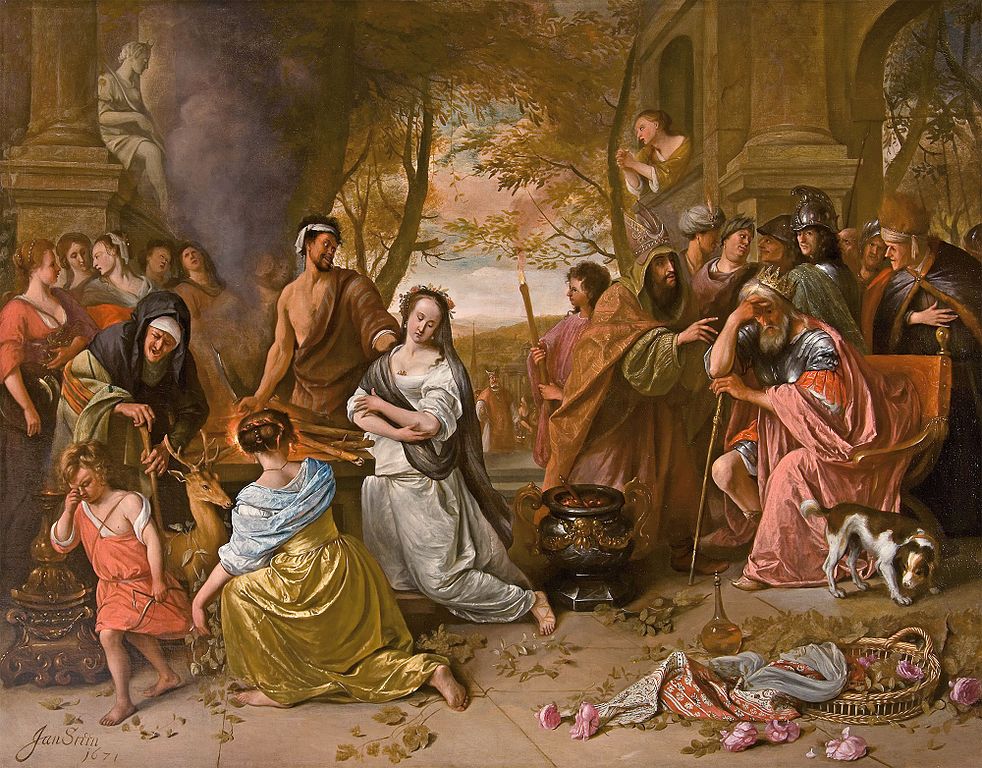
How people started to offer sacrifices to the gods? And why?
Nobody knows when the humans started to sacrifice things to the gods and demons. Today scientists have evidence that almost every community and nation from the past had those customs. The process of offering sacrifice was different, of course. But the need for that was the same no matter in which part of the world community lived and how civilized it was. People from all part of the world wanted to please their gods. This need probably started from the moment human realized that nature is more powerful than anything. People realized that everything they build and everything they want doesn’t depend on them.
Nature always wins. Every temple or house they built could easily be destroyed in one simple storm, earthquake or fire. And they didn’t have an explanation for that natural phenomenon. So, they thought those things were sent to them from the gods, demons or some other spirits. They found a way to protect themselves ― they realized that they should offer something to the gods. In that way, they believed that they are going to be protected and safe. Gods and demons will be satisfied because they got something and now people will be able to live without fear.

What they usually offered as sacrifice?
Sacrifice could be a thing (food, gold or some other material). That was a bloodless sacrifice. But those kinds of sacrifices were less worth. People believed that Gods and demons don’t like those offers as much as they like blood sacrifices. Animal sacrifices were in second place. Blood was something so precious to the gods, they believed. However, the biggest and the most precious offer was human sacrifice. People in the past felt an obligation to offer the most worth sacrifice every time they wanted to build something big or when they had some problem. If someone was sick or dying, they offered another life to save him/her. If there was no rain for the crops or people were afraid of some disaster or they simply wanted to make sure that gods are going to stay good to them, they offered sacrifice. If the reason for offering sacrifice was big, they had to give to the gods something really important. If you were asking for something big and important, you should always offer a blood sacrifice. For smaller things, people offered bloodless sacrifices.
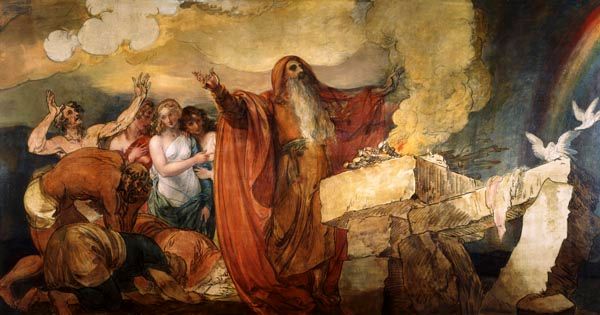
The most common Slavic ways of sacrificing from deep past
There is no clear evidence of human sacrificing in the past of Slavic people. There are no written documents that can be proof of this custom. We can just guess about that. Everything that we know is just part of the myth, folk poems, and stories, legends. Anthropologists believe that the most common ways of human sacrificing in the deep past of Slavic people were drowning in the water and putting the victim alive in the walls of some building or bridge.
There is one amazing Serbian folk poem named ʼZidanje Skadra’ (’Building the Town of Skadar’) which remembers this old custom from the deep past. In this poem, three brothers are building town Skadar, but they cannot finish the building. They are trying to build a town on the place that not belongs to the humans. This place is in a pure nature and human beings don’t deserve to be there. They were trying to take that place and build the home for humans. In the deep past, Slavic people believed that there is a huge difference between human place and natural place. The humans couldn’t just go and take some place in nature and build there home.
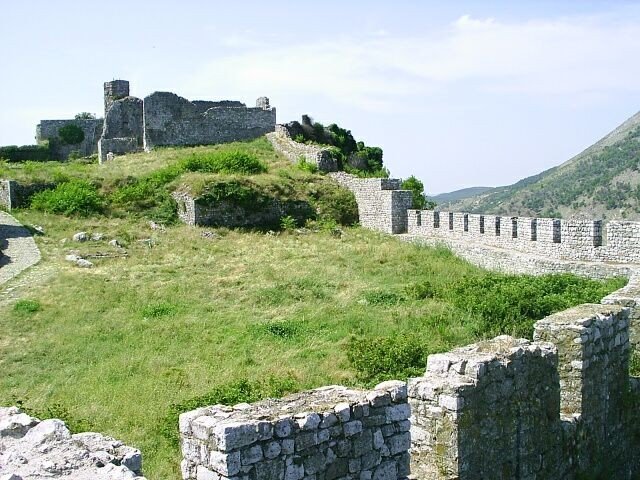
Nature belongs to gods, demons and other creatures. If humans would try to go there, they would be punished. Some creature could become angry because of that visit. Humans can get sick, cursed or some of those creatures can even kill them. There is a border between those two worlds ― the world of humans and the world of gods and demons. Humans cannot make the step over it. In this famous poem, brothers are trying to make a home for their people on the place that belongs to supernatural beings. Because of that one of those creatures doesn’t want to let them build the town. That is wila ― one of the most famous Slavic supernatural beings. I will make some special post and explain everything about this creature.
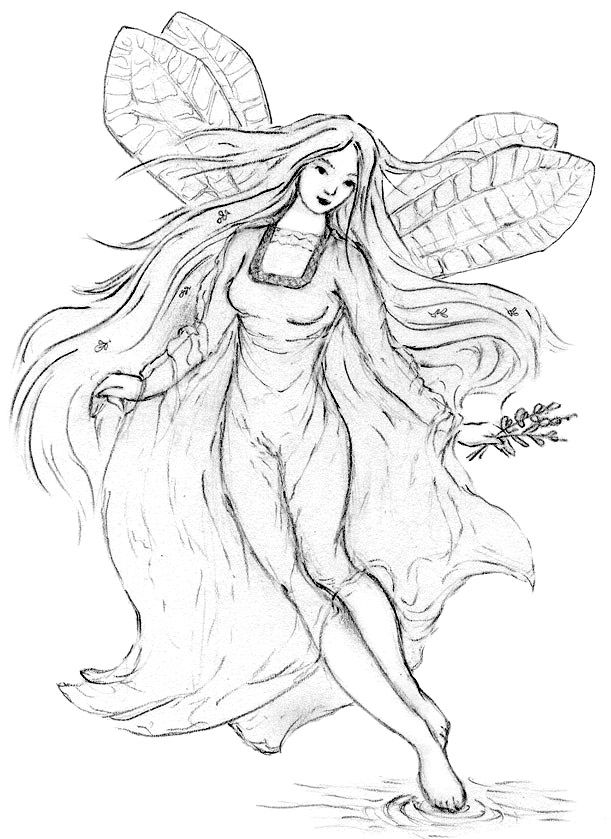
Wila didn’t want to let them build this town without making some sacrifice. First, she demanded child sacrifice ― the biggest sacrifice that someone could make. She told them that they have to find brother and sister, young twins named Stoja and Ostoja. In the Serbian language, the meaning of those names is connected with words ’stay’ and ’resist’. If they find those kids and put them alive in the foundation of the town the building is going to resist to everything and it will stay strong and unconquerable forever. If this is too unusual and weird for you, just remember bible story about town Jericho. Two children were built in the fundaments of this town. That is proof that this custom is so old and that it was part of everyday life in deep past of so many communities.
However, brothers tried to find kids but it was impossible. Vila agreed that they can offer something else ― the life of one of their wives. The agreement was that one of their wives, who comes early in the morning and brings the lunch for workers, is going to become a sacrifice. They swore that they are not going to tell their wives about this and that they are going to let their destiny to decide which of them is going to be sacrificed. However, two older brothers didn’t keep their word and they told to their wives not to come. The wife of the youngest didn’t know about that and she came, so she was sacrificed. They put her alive into the walls of the building and her last wish was to keep seeing her baby boy until she dies. They make holes for her eyes so she can see her son and holes for her breasts so she can feed him. This is one emotional and tragic poem about sacrificing the most precious that one man can have. He sacrificed the love of his life and mother of his child.
In deep past it was not uncommon for people to offer a life of a human as a sacrifice to the gods. That was necessary if they wanted to be sure that whole community is going to be in progress, healthy and safe. When they wanted to build some temple, bridge or town, they had to offer something so precious. In 1946 one architect found human skeleton inside of bridge from the 16th century. This bridge still exists in the place named Žvale, on the river Uvac.
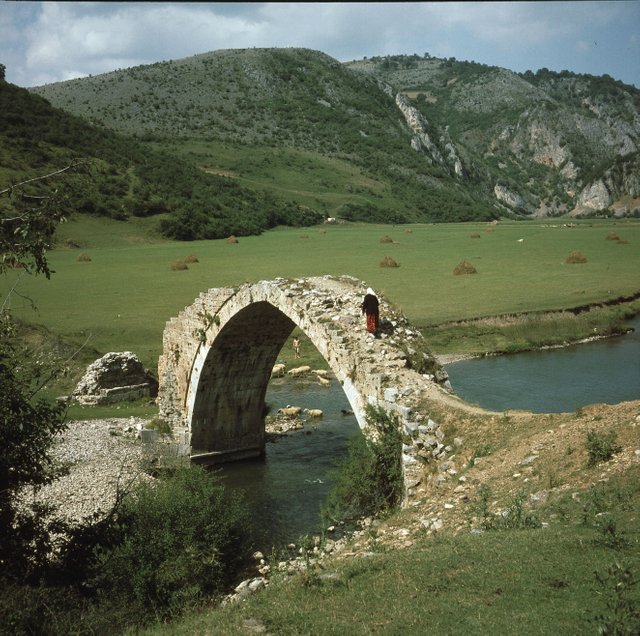
Violence and victims
The human sacrifice had to be selected very carefully. Usually, that was some young and healthy person ― sometimes that was even a kid. Those victims were very precious. Sometimes victims didn’t know about their destiny. People who had to kill them had to be violent. But, those kinds of victims were less worth then victims who decide to die by themselves. In the past people deeply believed in life after death. Because of that some of them decided to be sacrificed to the gods. That was their own will and this kind of sacrifice was the most valuable to the gods. People believed that victim should smile in the moment of dying. In that way, the victim will be happy and satisfied in the next life.
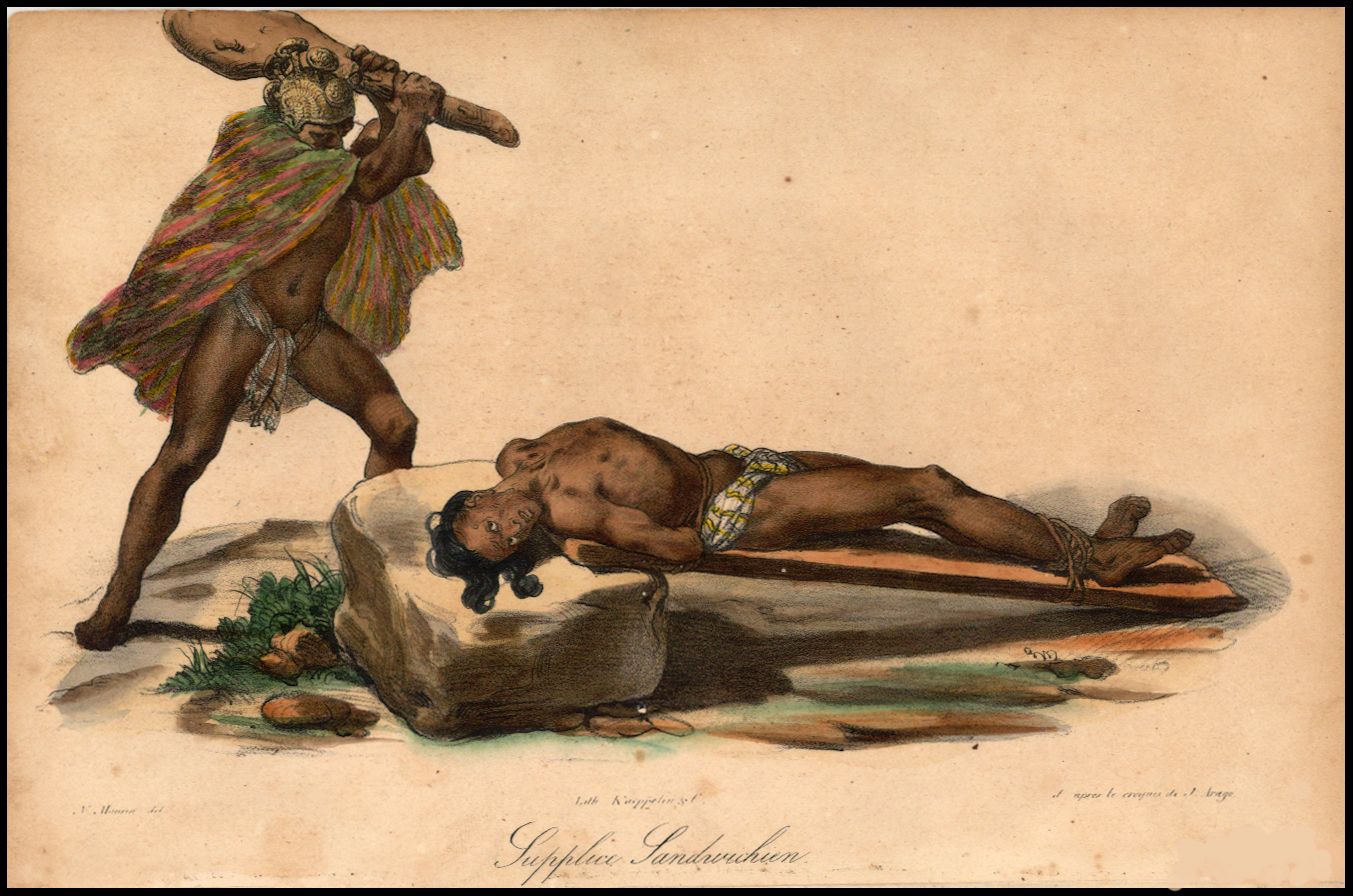
Transformed ways of sacrificing
Serbs like other Slavic people still have customs that can be connected with the old custom of offering sacrifices. In East Serbia, some people still put animals in the fundaments of their houses. They are offering a life of animals as sacrifice. In some other places in Serbia, people put money but it is custom to give to the workers some shirt or towel when they finish the building. When everything is finished they invite neighbors and members of the family and make lunch. They use to make pork or beef for their guests and this is also some kind of sacrificing.
Before some years in some parts of Serbia there was the custom of taking a bath in the river during the celebration of some dates. Young girls or some pregnant ladies went inside the river and took a bath. Today we believe that this custom was practiced in the name of nature and because of celebrating fertility. Some anthropologists believe that this custom is also connected with the custom of human sacrificing by drowning in the water. Today on that date young girls just take a bath in their own homes but they are putting some herbs inside the tub.
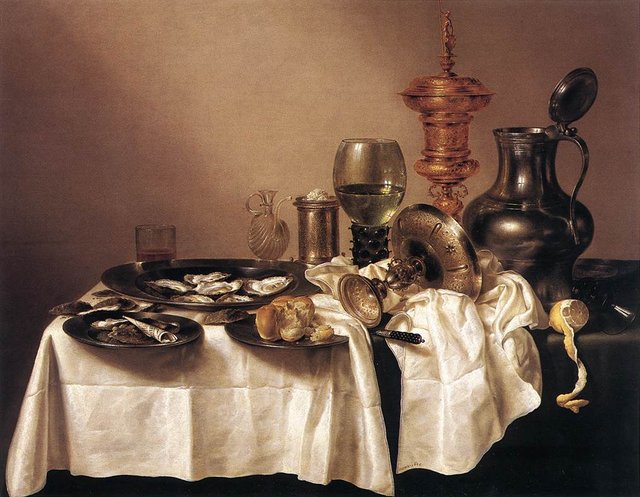
My people also have one a little bit weird custom more. In the villages, people still are taking a lot of food to the cemeteries. They believe that they are offering the food to the dead as some kind of sacrifice. In the deep past, we believed that a dead person becomes some kind of spirit and that can be angry or satisfied. If we offer the food to those spirits they are going to be peaceful and they will protect us.
We also have slava. This is custom that exists only in Serbia, I think. On a special date, we invite our friends and neighbors and we make a lot of food for them. We also make some special kind of bread, called kolač. With the wine, this is also some kind of sacrifice.

Conclusion
Human or other kinds of sacrificing were part of everyday life in the deep past of a lot of communities, no matter how civilized they were. People felt unsecured and they wanted to make sure that they will be safe. They thought that their lives depended on the will of gods and demons and they had to offer something worth to them. Only in that way, they felt protected. They often offered human lives to their gods and sometimes the victim felt great honor to be offered to the gods as sacrifice.

Ahh, this is awesome! Sacrifice is a very interesting part of human myth and history, and is incredibly old. The ancient Mayan peoples of South America also practiced sacrifice. They would go to war with other nobels only for the purpose of catching nobels and kings for sacrifice, and it was a large part of many ceremonies and important dates. They also cut themselves open, the penis and the tounge were the most sacred (And painful) areas and offer their blood to feed their ancestors. The king had the duty of cutting his most sacred area and publicly sacrificng his blood to the gods for all to see.
Thank you for putting together such a lovely article! I hope to learn more!
Thank you for you comment. I didn't know about Mayans customs. It's so interesting.
Hello Cae, what you're writing about Mayan culture is very interesting. Do you know some source on this you can recommend? Kind regards, Nadine
My main source is the wonderful book A Forest of Kings, the untold story of the ancient Maya by Linda Schele and David Freidel.
If you cannot find the book, there are a couple documentaries on youtube and some online sources, but as far as I can tell they do not nearly go into as much detail as this book does on all sorts of things about the Mayan civilization.
This book has about 500 or so pages, and its really a wonderful and imaginitive read that was suprisingly not boring and very engaging!
I hope this helps!
Didn't know Slavs were considered to offer human sacrificies. Interesting stuff. But like you said remnants of sacrificing can atill be seen in todays ceremonies. Good post.
Yeah, we have a lot of remants in our everyday life. @spalatino
Beautiful article, Ana. :)
Thank you so much. :)
What a great post! Keep them coming! I'll follow you :) Thank you!
Thank you so much. I will. Steem on! ;)
Congratulations @anasav! You have completed some achievement on Steemit and have been rewarded with new badge(s) :
Click on any badge to view your own Board of Honor on SteemitBoard.
To support your work, I also upvoted your post!
For more information about SteemitBoard, click here
If you no longer want to receive notifications, reply to this comment with the word
STOPGrate post Ana! :)
Always enjoying your writing. Keep it up :)